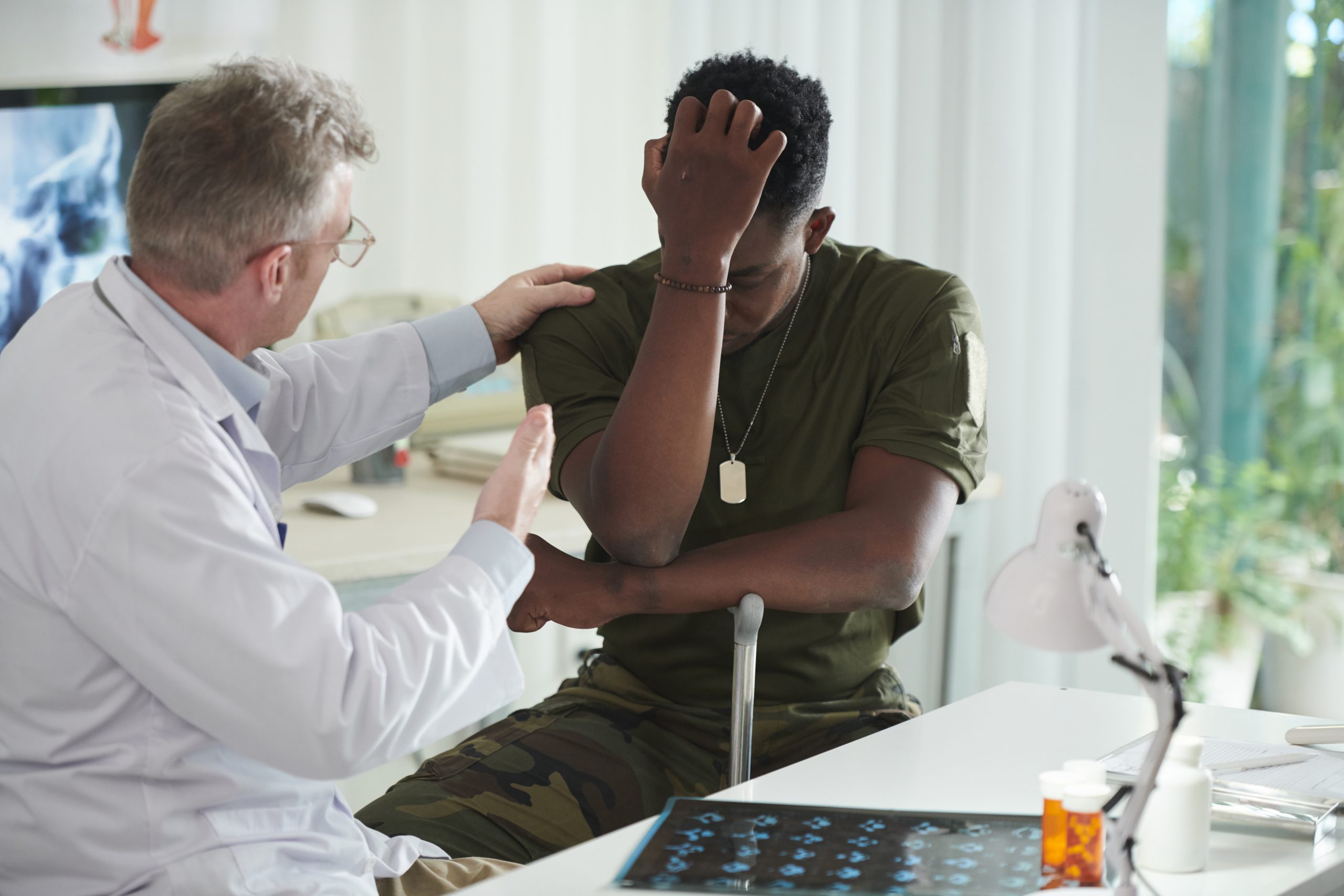
What is PTSD?
Post-traumatic stress disorder (PTSD) is a mental health issue that can arise following exposure to traumatic events. This was Initially identified among military veterans, before calling it post-traumatic stress disorder, it was previously referred to as ‘shell shock,’ yet it is not confined solely to soldiers. PTSD can result from any traumatic experience that has happened in the past.
Understanding PTSD
PTSD makes a start within the brain, when someone goes through a traumatic experience, your brain’s amygdala and hypothalamus react by prompting the sympathetic nervous system to release the stress hormones adrenaline, which ready you to either fight or flee the threat. As a result:
- your heart rate quickens.
- your pupils dilate.
- your sense of hearing sharpens.
- and your digestive functions temporarily halt.
This is all to enhance your readiness to escape or defend yourself.
Another two additional reactions to threats: freeze or fawn. Depending on the circumstances and the individual, a person might respond by becoming immobile when confronted with danger or, if the threat is from another person, attempting to pacify them to alter their menacing conduct. It’s crucial to emphasise that not all distressing situations leading to PTSD entail physical violence. Psychological mistreatment, frequently found in scenarios involving intimate partners or domestic violence, can also result in PTSD.
However, numerous traumatic situations can hinder an individual from engaging in the instinctual responses of fighting, fleeing, or re-establishing a sense of safety. These experiences can overwhelm one’s capacity to react in conventional ways, Individuals who lack a supportive family or community to turn to for comfort and safety often find themselves unable to speak openly about the trauma they have endured. leaving them trapped in a state of emotional distress and vulnerability. A brain that develops PTSD, continues to function as if danger is still occurring even if there is no longer danger.
PTSD symptoms
The symptoms of PTSD can vary in how severe they are, and they most likely won’t appear straight after a traumatic event happens. They usually come in four main groups: intrusive thoughts, avoidance, negative changes in thinking and mood, and changes in physical and emotional reactions. Here are some common symptoms within each category:
Intrusive thoughts
- Flashbacks
- Intense phycological distress or physical reactions when reminded of the trauma.
- Nightmares related to the trauma
- Distressing memories of the event
Avoidance
- Efforts to avoid thoughts, feelings, or conversations related to the trauma.
- feeling isolated from others.
- Avoiding places, people or activities that are reminders to the event.
- Difficulty remembering important aspects of the traumatic event.
Negative changes in thinking and mood
- Constant negative beliefs or expectation about oneself or the world
- Distorted blame or guilt related to the trauma
- Constant negative emotional state such as, fear, guilt, anger, or shame
- Feeling alienated from others, experiencing difficulties forming and maintaining relationships
Changes in physical and emotional reaction
- irritability, anger, or aggressive behaviour
- being constantly on guard for threats
- Exaggerated response to minor things
- Difficulty concentrating or sleeping.
- Self-destructive behaviours, such as substance use.
- Physical symptoms like headaches, stomach-aches, or muscle pain
PTSD symptoms can manifest differently in men and women, although it’s important to note that there is considerable overlap between the genders, and not everyone will experience symptoms in the same way. PTSD is a complex condition influenced by a variety of factors including individual differences, the nature of the trauma, and cultural and social context. Here are some general differences that have been observed in how PTSD symptoms may manifest in men and women:
Coping mechanisms: the way men and woman cope with their symptoms can be different. For example, woman may talk about their feelings and experiences with a therapist or loved ones. however, men tend to distract themselves from the pain and discomfort they may be feeling so that don’t have to talk about their feelings.
Social support: woman usually seek support from friends or family and open u- about their trauma. however, men tend to keep their trauma to themselves, which can lead to feeling isolated.
People with complex PTSD can experience the general PTSD symptoms as well as other clusters of symptoms related to:
- having a hard time communicating wishes or expressing emotions; experiencing depression, thoughts of mutilation, and suicide.
- explosive anger, aggression.
- explosive anger, demonstrating aggression
- lack of trust in others, social isolation
if you are experiencing thoughts of suicide, or thinking of self-harming, or think someone’s safety is at risk, immediately contact 0800-689-5652 if you’re in the UK.
Given that a conventional PTSD diagnosis does not encompass these additional symptoms, complex PTSD can be misinterpreted as other conditions, such as borderline personality disorder or Masochistic Personality Disorder.
PTSD treatment
PTSD is a very tough condition to live with, that can have a huge effect on people’s lives. PTSD can be managed and treated successfully through a number on different treatments.
Including:
- Medication
- Psychotherapy
- Group support
With treatment, symptoms could possibly diminish.
Due to its impact on both mental and physical well-being, individuals often pursue comprehensive therapy for their PTSD symptoms. The following outlines typical treatments for PTSD:
- Cognitive behavioural therapy for PTSD. This involves a therapist assisting the patient and together, they identify and modify the thought process and behavioural tendencies developed due to their trauma.
- Narrative exposure therapy is used to treat PTSD, the therapist will help the patient construct a detailed narrative and emphasise the significant events, including the traumatic life experiences.
- Medication can also be prescribed by a psychiatrist or a doctor.
Facing stigma
There exist numerous misunderstandings surrounding PTSD. One misconception is the mistaken belief PTSD is a sign of weakness, people wrongly believe that developing PTSD is a sign of emotional weakness. PTSD is a psychological response to trauma, and anyone can be affected by it regardless of their strength or resilience.
